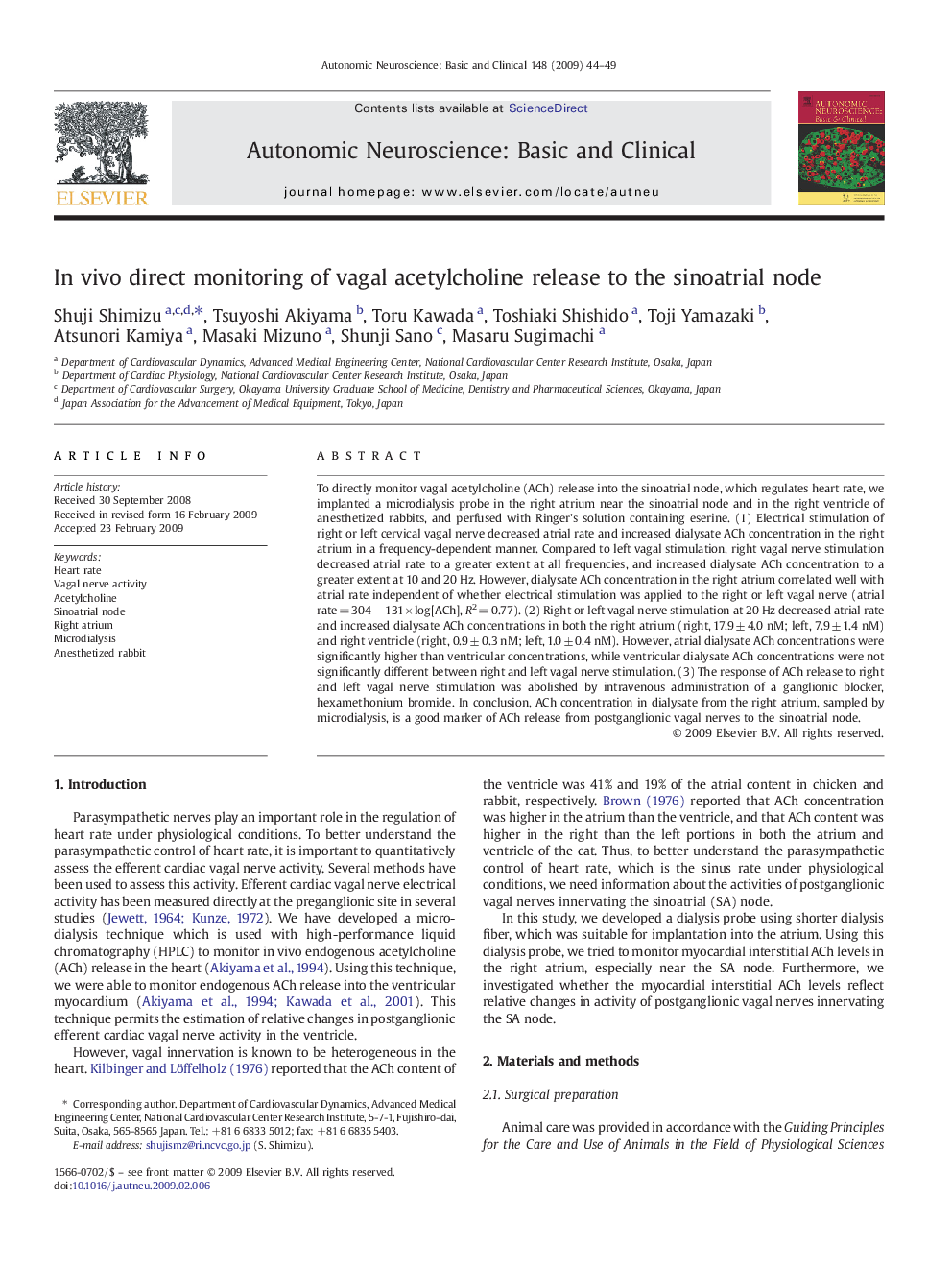| Article ID | Journal | Published Year | Pages | File Type |
|---|---|---|---|---|
| 6004817 | Autonomic Neuroscience | 2009 | 6 Pages |
To directly monitor vagal acetylcholine (ACh) release into the sinoatrial node, which regulates heart rate, we implanted a microdialysis probe in the right atrium near the sinoatrial node and in the right ventricle of anesthetized rabbits, and perfused with Ringer's solution containing eserine. (1) Electrical stimulation of right or left cervical vagal nerve decreased atrial rate and increased dialysate ACh concentration in the right atrium in a frequency-dependent manner. Compared to left vagal stimulation, right vagal nerve stimulation decreased atrial rate to a greater extent at all frequencies, and increased dialysate ACh concentration to a greater extent at 10 and 20 Hz. However, dialysate ACh concentration in the right atrium correlated well with atrial rate independent of whether electrical stimulation was applied to the right or left vagal nerve (atrial rate = 304 â 131 Ã log[ACh], R2 = 0.77). (2) Right or left vagal nerve stimulation at 20 Hz decreased atrial rate and increased dialysate ACh concentrations in both the right atrium (right, 17.9 ± 4.0 nM; left, 7.9 ± 1.4 nM) and right ventricle (right, 0.9 ± 0.3 nM; left, 1.0 ± 0.4 nM). However, atrial dialysate ACh concentrations were significantly higher than ventricular concentrations, while ventricular dialysate ACh concentrations were not significantly different between right and left vagal nerve stimulation. (3) The response of ACh release to right and left vagal nerve stimulation was abolished by intravenous administration of a ganglionic blocker, hexamethonium bromide. In conclusion, ACh concentration in dialysate from the right atrium, sampled by microdialysis, is a good marker of ACh release from postganglionic vagal nerves to the sinoatrial node.
